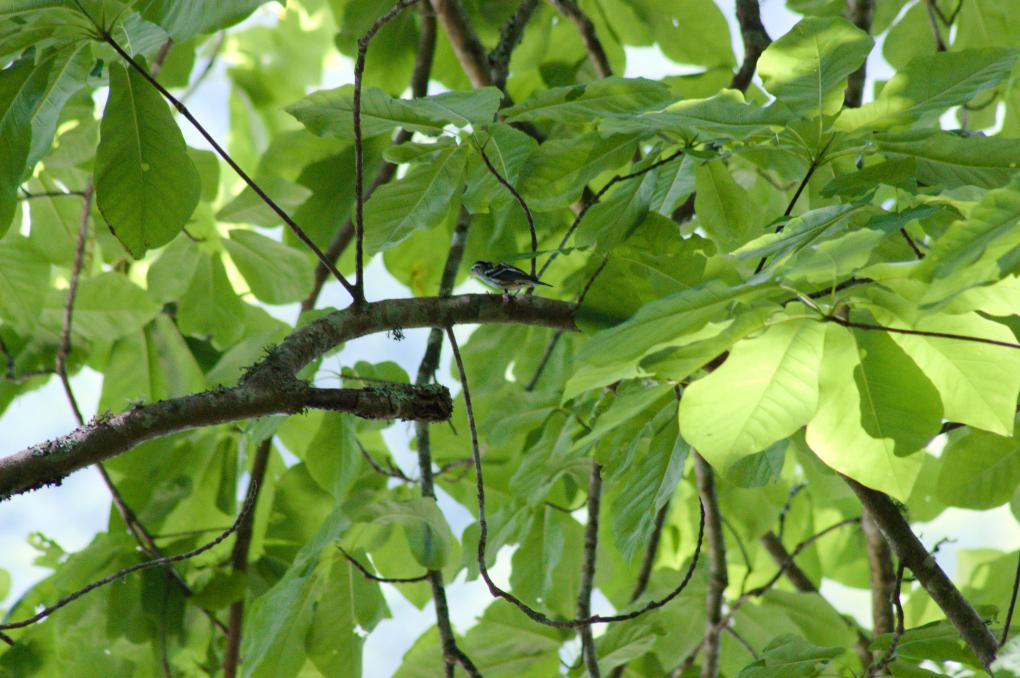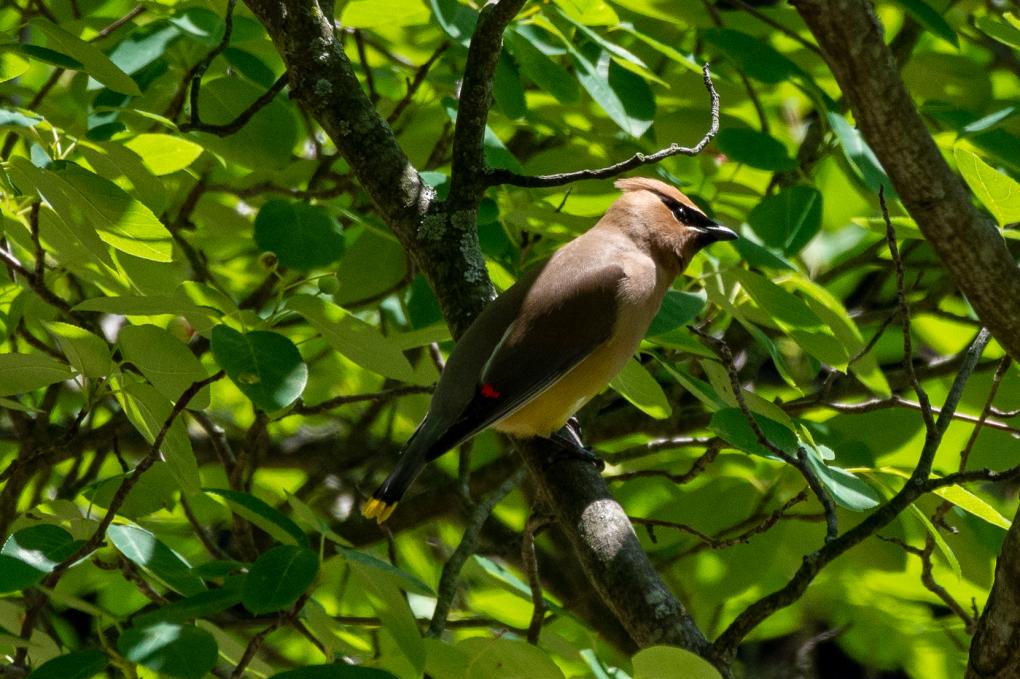The Cornell Lab Bird Academy › Discussion Groups › Bird Photography with Melissa Groo › Practice Understanding Birds for Better Photos
-
I discovered these wood storks (mycteria americana) in Naples, Florida, recently, while taking mid-afternoon walks around my mother's retirement community. I often see egrets and herons and was so surprised to see wood storks among them wading and feeding in the marsh waters just steps away from the walking path. I have only seen wood storks from afar and they really look different when flying through the air. I was glad to have had my iphone with me, but next time I visit my mother in Florida, I will plan to have a "real" camera with me and take more time to observe them. Here at home, in Virginia, I look forward to setting up a birdfeeder and watching what birds arrive. I often see pileated woodpeckers in the trees above our house during the morning "golden" hours but a normal lens just doesn't reach them like a telephone lens would. I wonder if there is a way to take a photo through binoculars.... :)


-
I often see flocks of Golden-Crowned Kinglets in small water features, like ponds or drainages. The rest of the time they are high up in trees and hard to photograph. I was surprised that this little one was alone and did not seem at all bothered by my presence. The research I did for this assignment helped me narrow down the likely hood of seeing a kinglet at this particular pond, and when. I also learned that these are fascinating little birds that are active even in very cold climates (ie winter in Maine). This was surprising because they are so tiny. Now that I know this I am excited to try and photograph them in snow, especially once I purchase a fancier camera.

-
I have lots of Chickadees at my feeders. Through research, I’ve come to learn that each bird will hide tens of thousands of seeds in hiding spots for the winter months. They remember each one. Now I notice them checking under roofing tiles, in little nooks and crannies for places to hide their seeds.

-
I went into our local woods for this and there was a bunch of activity, there were a lot of winter visitors in North Carolina, such as White throated sparrows, Yellow bellied sapsuckers, Bufflehead, and a Ruddy duck.
 I have never before seen a ruddy duck in the lake, but today must have been different! There was a lone immature or female swimming around , and I managed to get some pretty close shots. these are mainly dark because the bird was in the shadows, which is tough to get good shots. These where both taken by a Cannon Rebel T6 with a Tamron 300mm lens
I have never before seen a ruddy duck in the lake, but today must have been different! There was a lone immature or female swimming around , and I managed to get some pretty close shots. these are mainly dark because the bird was in the shadows, which is tough to get good shots. These where both taken by a Cannon Rebel T6 with a Tamron 300mm lens
-
I have found that by waiting and watching the light on the subject is really important for a good photo if possible. Light will determine a good photo to being a great photo. I had taking numerous photos of these Evening Grobeaks the best ones were the shots of the eye being lit by the natural light.


-
 Such gorgeous birds, great photos, thanks for sharing Lisa.
Such gorgeous birds, great photos, thanks for sharing Lisa.
-
-

-
I have been observing a pair of White Breasted Nuthatches in our yard and at our feeders for going on 3 years now. The first year they were extremely timid and came nowhere near me and I kept a respectful distance from them. This year was a breakthrough year since they decided to nest in a bird box on the side of our garden shed. They worked diligently at nest building, tending and feeding their young. What surprised me the most was that they were able to teach me how to coexist peacefully while they raised their young. When bringing food to the nest they would sit on top of shed to check out the surroundings and if I was too close they would begin their little honking all expressing annoyance/alarm. My job was to break eye contact turn from them and walk away. Over time they became more and more tolerant of my presence and proximity as long as broke eye contact. Throughout late summer the family of four has maintained a presence in our yard and is almost as bold as the Black Capped Chickadees when they come to the feeders. I am able to stand fairy close and get some reasonably good photos. What I've learned is that given time birds will learn to trust you in their territory. It might actually take several seasons for this to happen.

-
I choose to monitor one of the very common bird in my area, which visits almost everyday on my terrace, Common pigeon ( Columba livia, Order: Columbiforms). Eventhough, I see this bird daily, I have never noticed it carefully. I always run behind the rare birds, as most of the birdwatchers, but never consider observing this common bird in around my home. Hence, I decided to follow Melissa and do some research on this common pigeon. Habitat: common and widespread resident urban bird, commonly found in temples, farm, villages and towns. Altitudinal range 75- 4200m. Food : cultivated food mainly seeds also green shoots Nesting and breeding: It generally nests in holes, rock crevices and ruined walls. They breed throughout the year. Distinctive behaviour: they live in large flocks and their flight in the flock is spectacular to watch, following a certain pattern. This bluish Grey bird has glistering metallic green, purple and magenta sheen on neck and upper breast which shines gloriously in sun. Sound : goootr-goo ... communicate each other Migration : resident bird After this information on hand, I started observing the common pigeon. I observed that they were not comfortable with my camera, as they fly as soon as they see my camera. it took me couple of days of observation to take this picture. The pigeon was sun basking in the first sun in this winter morning. I observed grooming and scratching the feathers. He was sun basking as well as checking me from time to time. Finally, seems like he has no problem from my presence. I learned to be patient and more observant, thereby respecting their space from this exercise. thank you pc : sorry for the photos as they are not real crash hot, as I was using 28- 300mm lens Nikon D600.



-
I have been monitoring Common Loons for the Vermont Center for Ecostudies several years at two very different lake communities. What I noticed most this year while monitoring a Loon pair on a remote, more natural setting was the increased fear/caution response to humans. The previous lake was much more populated with 3+x the development and human/boat activity. It was a true example of city versus country Loon behavior. On the busier lake I became known by the resident pair over the years(maybe they recognized my kayak). It is as if they knew I was helping to protect them yet they were also used to the human activity. As I placed the floating raft signage in the spring, which warns people to keep away during nesting season, the Loons swam near by. As I checked on them weekly with active nest incubation I knew the respectful distance and was able to photograph the activity. Not so on the more remote location lake of the same acreage yet less than a 3rd of the development and fewer motorized boats. I carefully monitored the nest from a very safe and respectful distance, however the parent on the nest would lay low on the nest aware and afraid of my presence...it slid into the water. I was horrified that I was the cause of the departure. Never anything I would have wanted to do. This was a different culture and experience for sure. I watched from my property on the lake as others approached the cove unaware of the nest and I am sure the same departure by the nesting parent. These loons need much more space and respect. The nest failed 2 attempts in 2020 and as I have learned that it has failed for several years. Now that I am new to this lake and monitoring the resident pair I have have suggested changes in access to the cove during breeding/nesting season. Historically no signage was placed because it was thought human activity was so low and it was a much more organic approach to Loon habitation, however kayakers were aiding in the failed nesting seasons. As they paddled nearby, the parents abandoned the nest and predators took the eggs. I was completely aware and the parent left the nest when I approached at a distance to monitor and photograph so it had to be so when those unknowingly approached. This was a very clear experience with difference in location/habitat and behavior of local animals. As animals of a certain species are very similar they are different in as many ways. Melissa, your experience with the Belted Kingfisher Nest was a perfect example and hits home with my experiences too. Thank you for sharing! They are such an elusive, beautiful bird.
-
I learned how Black-billed Magpies use their tails to maintain balance. They are absolutely crazy about peanuts, and emptied the feed in less than 5 minutes. They come rocketing in and use their tails at the last minute to stop when they land directly on the feeder. The research made me think about how the tall grass will obscure them while they are ground feeding, so I photographed them from my second-floor window.
-

-
saw this at my feeder and watched it for a while, the took out my camera at a safe distance. I love the way that the White breasted nuthatch can feed upside-down!
-

-
I

-
Amazing shot 🌟
-
-
Birding at Nisqually NRW this Great Blue Heron was fishing along the pier. I sat sat a safe distance while this beautiful bird ate this fish.

-
That is an amazing photo to capture.
-
-
Walking in a field late June when I saw a mother feeding her young on a barbed-wire fence. Time and again she swooped over the field & pond & quickly returned with insects. This continued for a very long time and they seemed to be totally unaware of my presence and the pictures I was taking of them. August is their peak migration time.


-
I look forward to seeing the hummingbirds show up for the summer at my feeder. This year they came but were not drinking from the feeder so I visited a local store and they recommended I change the feeder and brand of nectar and that worked. I have enjoyed observing them in Massachusetts but they will be migrating south soon. This is a female Ruby Throated hummingbird.
 .
.
-
I was walking in this road in the Yucatán Peninsula and we hear a couple of Laughing Falcons very near and we walk closer follow the call, and in a dry tree they were both. One fly away and the other stay a long time. like as if it felt good with us.

-
I was interested in the American Woodcock. I had never seen one in my neighborhood but thought I'd heard one once when walking in an area. For this assignment, I went to the marshy area where I thought I had heard the woodcock and sat for a while. I went in the early AM. There was a lot of activity in the marsh and at one point the woodcock just sort of waddled out of the weeds and onto an area where the lawn had been mowed. I watched it simply sit on the lawn for 20 min. or so. I snapped this photo and left.

-
 I spotted this Surf Scoter in the marsh at Horicon National Wildlife Refuge. This is a rare find for inland Wisconsin and he was working his way along the edge of the cattails on the opposite edge of an opening that flowed along the road. Using my car as a blind, I parked and waited for him to come to me rather than attempting to move closer. The bird remained in view rather than retreating to cover and passed within thirty feet of me apparently unaware of my presence.
I used the same approach waiting in a hidden position while this Black-Crowned Night Heron continued feeding along the shore at the Barkhausen Waterfowl Preserve and finally maneuvered into the proper light for this photo.
I spotted this Surf Scoter in the marsh at Horicon National Wildlife Refuge. This is a rare find for inland Wisconsin and he was working his way along the edge of the cattails on the opposite edge of an opening that flowed along the road. Using my car as a blind, I parked and waited for him to come to me rather than attempting to move closer. The bird remained in view rather than retreating to cover and passed within thirty feet of me apparently unaware of my presence.
I used the same approach waiting in a hidden position while this Black-Crowned Night Heron continued feeding along the shore at the Barkhausen Waterfowl Preserve and finally maneuvered into the proper light for this photo.

-
Surf scoter...I would love to see that bird...what a look!
-
-
I went out looking for great blue heron which are found around a local lake instead I found this beauty—a juvenile black crowned night heron just standing there watching me!


-
Beautiful capture
-
Agreed - a beautiful bird and photo.
-
-
I followed Melissa's advice and walked on the shore in the early morning at low tide. I was especially happy to find an abundance of Western Snowy Plovers on the beach at Coal Oil Point (just west of UCSB). These birds are listed as threatened since 1993 but they nest at this protected location each year. Many signs encourage visitors to keep a distance from the nesting area which is roped off. However the rest of the beach is open to walkers and surfers. I was especially pleased that a pair of these very cute young birds showed no fear of me as I watched them. Though I did not get down on my belly on the wet sand I squatted for quite a long time. Neither bird moved until I got up and left. My shutter speed was 1/800, my aperture F4 and ISO 160. My lens was at 600mm. When I look at these photos greatly magnified I can see every individual feather. Editing was in Photoshop only - haze removal and Levels adjustment. Only minor cropping.

 The rear bird is slightly out of focus due to narrow range of focus (F4).
The rear bird is slightly out of focus due to narrow range of focus (F4).

-
Really gorgeous!
-
Love how the white pops in these images! Also like that the second bird in the middle shot is not in sharp focus, adding to the emphasis in the bird in front. Just starting this course myself. Hope I can find birds as cute as these!
-
love the photos!
-
Awesome shots. All three photos have their own characters. First one simply beautiful plover. Second photo- slightly out of focus rear bird brings all your focus to the front one, kind of emphasising the bird in the front. Nice. Third photo- Front view with the reflection , pretty cool. (Is that an angry face?? :) )
-
Love these photos and that feather detail.
-
Fabulous image. I love the expression you captured and straight on perspective to get the reflection was well done.
-
-
- I'm always excited when migration begins in early spring. This is when the Black and White Warblers pass through our property. This year I was only to see them for a short time. On vacation at the lake house on Nantahala we went to the Wayah Bald Tower were we spotted the Black and White Warbler that you see in the two pictures where there is no leaves on the trees. With that said, for this section of the course I decided to study the Black and White Warbler. It's a fascinating bird. Builds its nest on the ground next to a tree, log or a bolder. Prefers primary to secondary forest. Eats most bugs you find on trees as it climbs around the bottom of the trunk making its way up similar to a Nut Hatch or Brown Creeper. As I set out to see if I could observe and photo one this week ( 07/21/2020). I was able to get a photo of the Black and White Warbler. (the photo of the trees with leaves). They are now you see me now you don't. Maybe you tell that it's a Black and White Warbler.



- I'm always excited when migration begins in early spring. This is when the Black and White Warblers pass through our property. This year I was only to see them for a short time. On vacation at the lake house on Nantahala we went to the Wayah Bald Tower were we spotted the Black and White Warbler that you see in the two pictures where there is no leaves on the trees. With that said, for this section of the course I decided to study the Black and White Warbler. It's a fascinating bird. Builds its nest on the ground next to a tree, log or a bolder. Prefers primary to secondary forest. Eats most bugs you find on trees as it climbs around the bottom of the trunk making its way up similar to a Nut Hatch or Brown Creeper. As I set out to see if I could observe and photo one this week ( 07/21/2020). I was able to get a photo of the Black and White Warbler. (the photo of the trees with leaves). They are now you see me now you don't. Maybe you tell that it's a Black and White Warbler.
-
I researched Cedar Waxwings because my usual observations of them are when they are located at the tops of tall trees on bare branches. The All About Birds site listed various berry trees that are favorite foods of these beautiful birds. A local photographer mentioned a park where there are serviceberry trees. Sitting on a bench in view of the trees, I could hear the bzeee calls from high up in the trees around me. It wasn't long before the Cedar Waxwings were flying down for the berries. I only managed to photograph them in half-sun/half-shade but they were fun to watch.

-
I live in NY and would love to see these birds. You have nicely captured them though! Great job!
-
-

-
The following image of a Mourning Dove was taken quite early in my backyard. I took this photo actually from behind glass from our living room window where we often see many different birds gathering. I can always tell when the Mourning Doves are near by their cooing and this one landed right in front of my eyes. We see them year round and often in pairs. They do tend to dominate this old wooden table but often we see them sharing seeds on the ground with Cardinals and Grackles. Occasionally, I see them on telephone wires resting along with taking rests on some large oak trees near us.
-
@Michele I live in a very wooded area, and I see them resting in trees a lot too. I also see them put up there wings like this a lot to when threatened. I would not have guessed that this picture was through a window. Great job!
-
Read More:
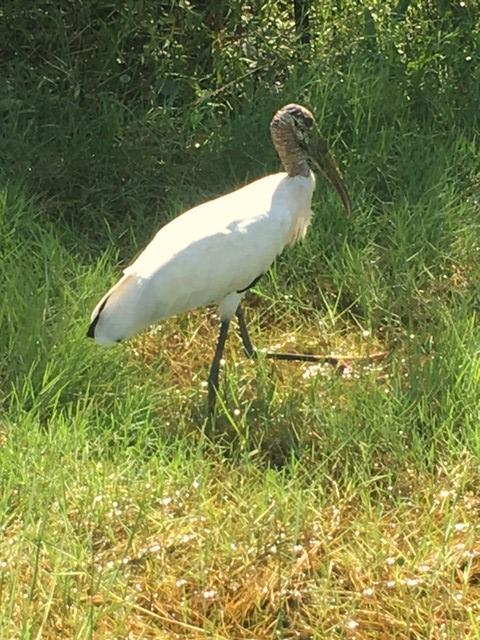
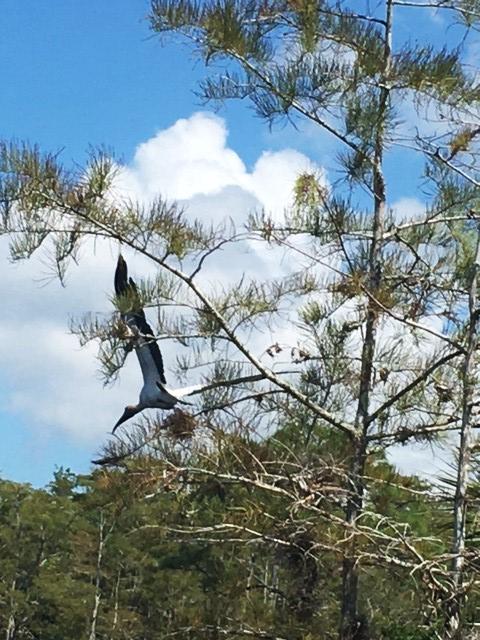
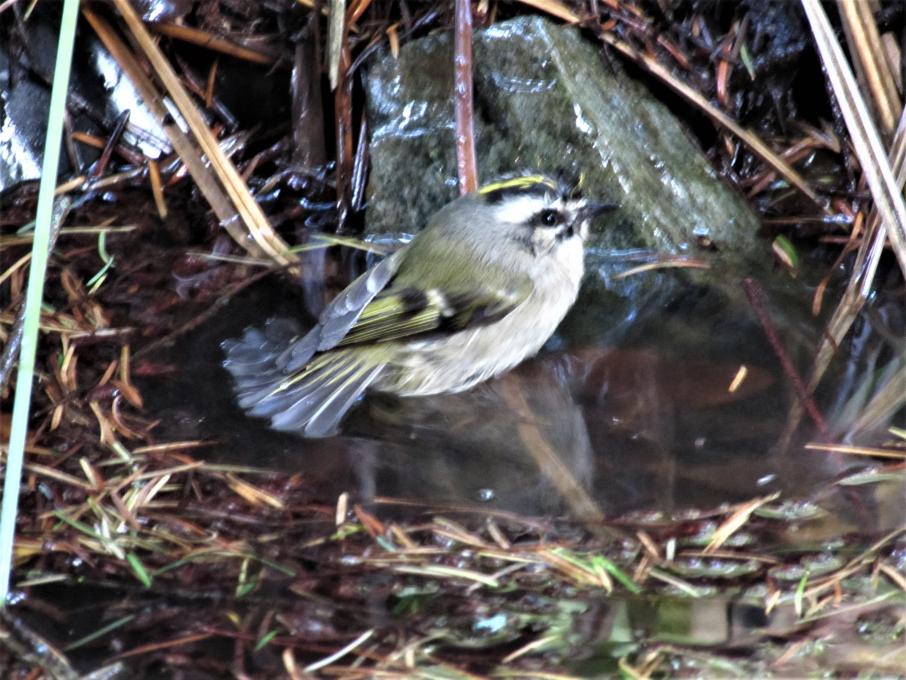
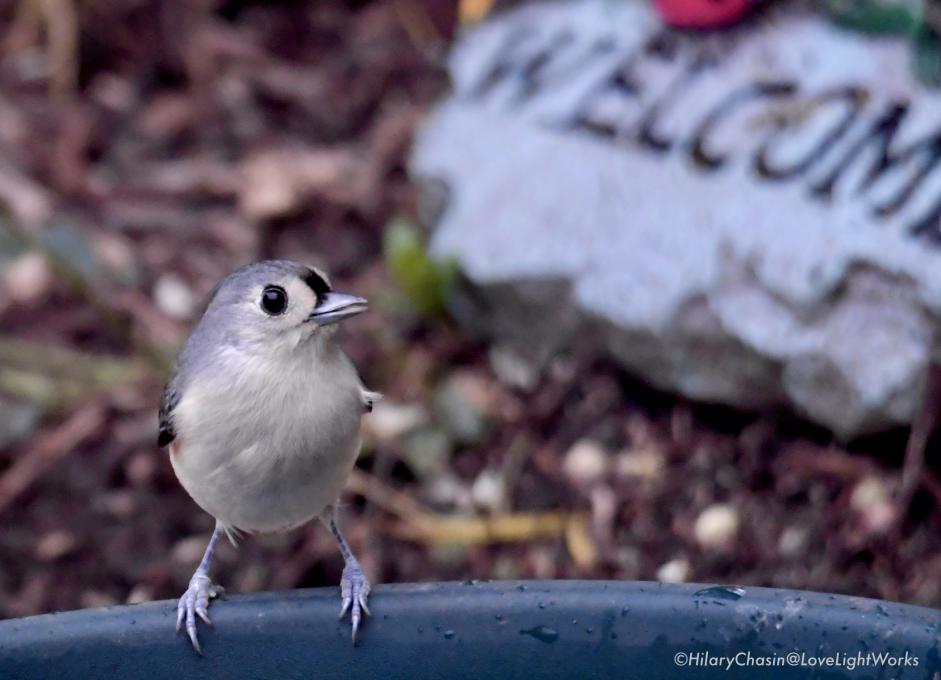
 I have never before seen a ruddy duck in the lake, but today must have been different! There was a lone immature or female swimming around , and I managed to get some pretty close shots. these are mainly dark because the bird was in the shadows, which is tough to get good shots. These where both taken by a Cannon Rebel T6 with a Tamron 300mm lens
I have never before seen a ruddy duck in the lake, but today must have been different! There was a lone immature or female swimming around , and I managed to get some pretty close shots. these are mainly dark because the bird was in the shadows, which is tough to get good shots. These where both taken by a Cannon Rebel T6 with a Tamron 300mm lens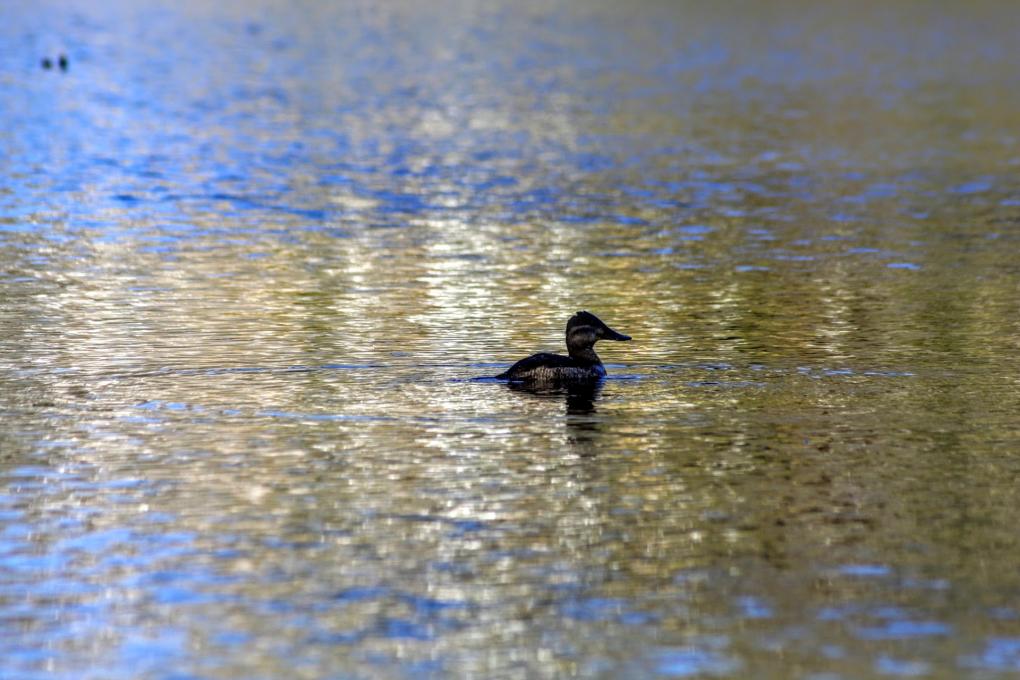
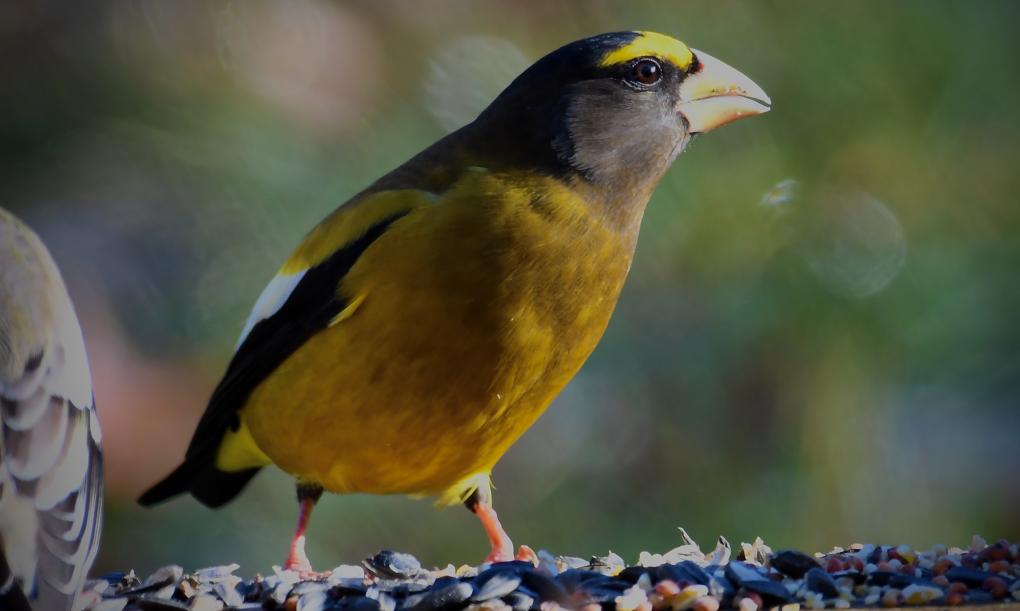
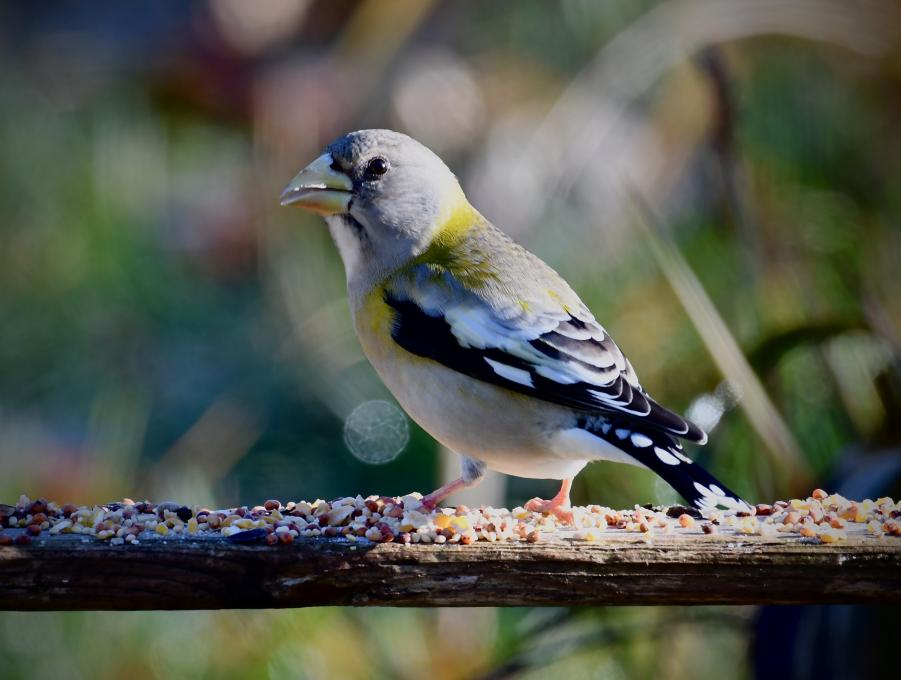
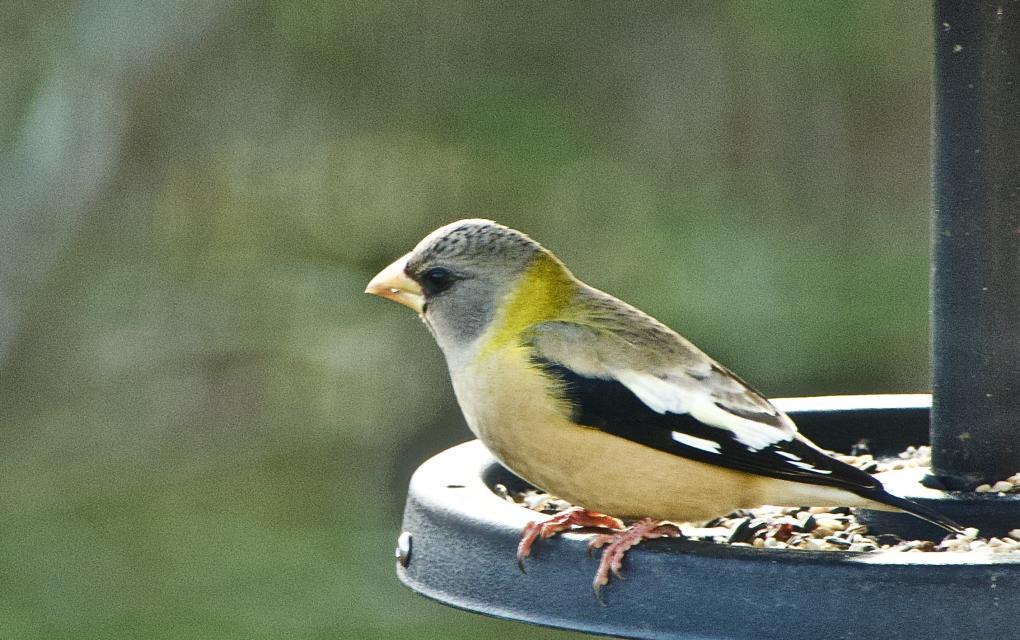 Such gorgeous birds, great photos, thanks for sharing Lisa.
Such gorgeous birds, great photos, thanks for sharing Lisa. 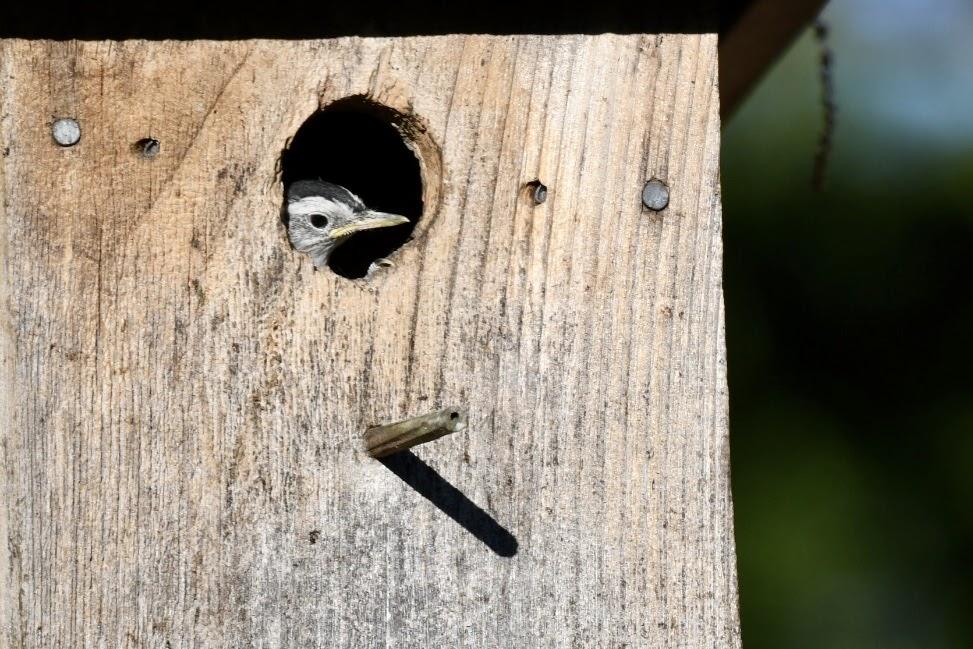
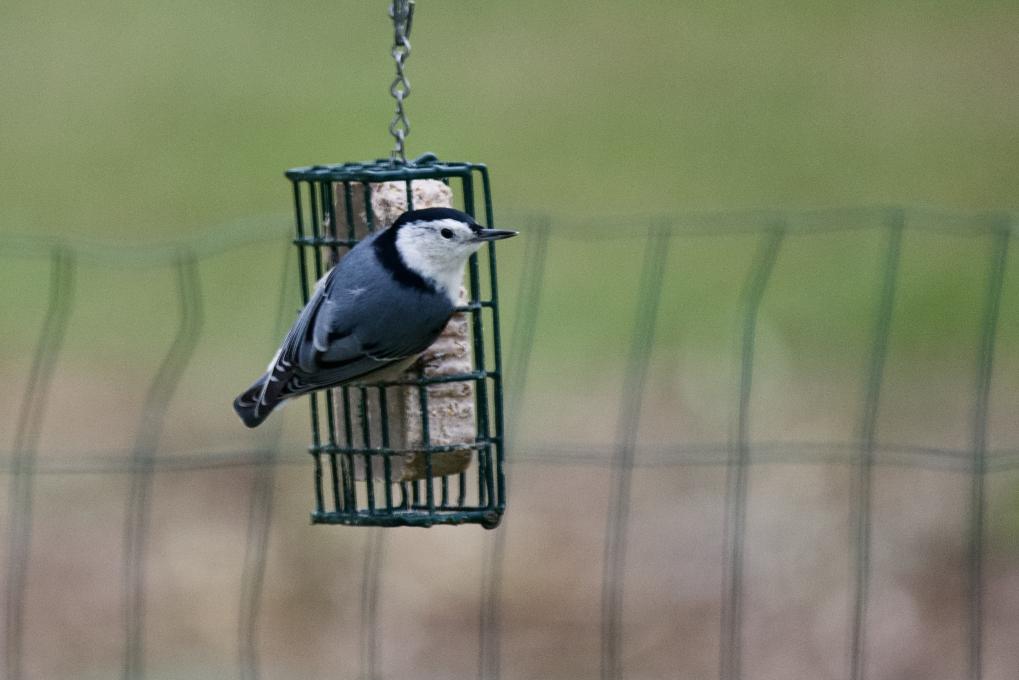

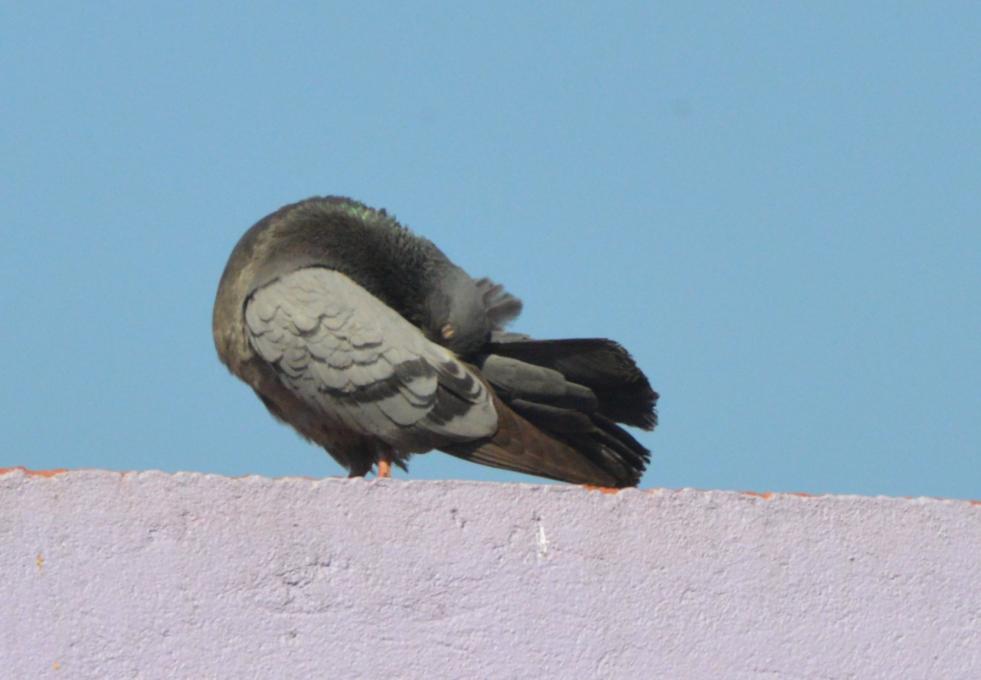
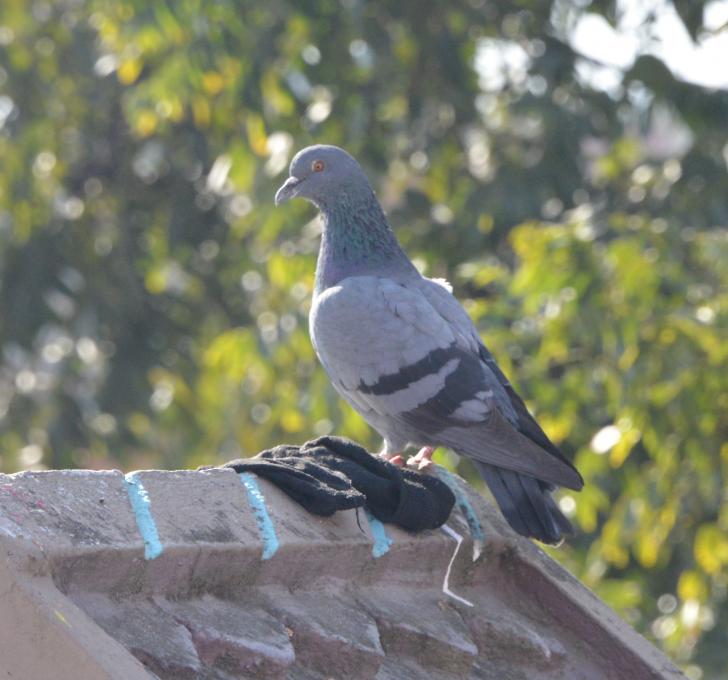
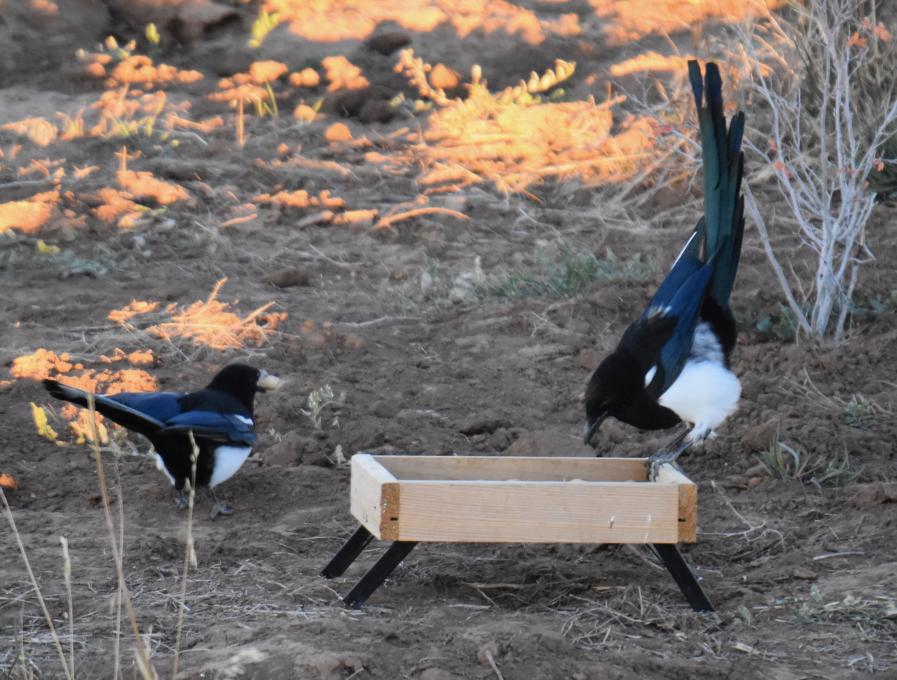

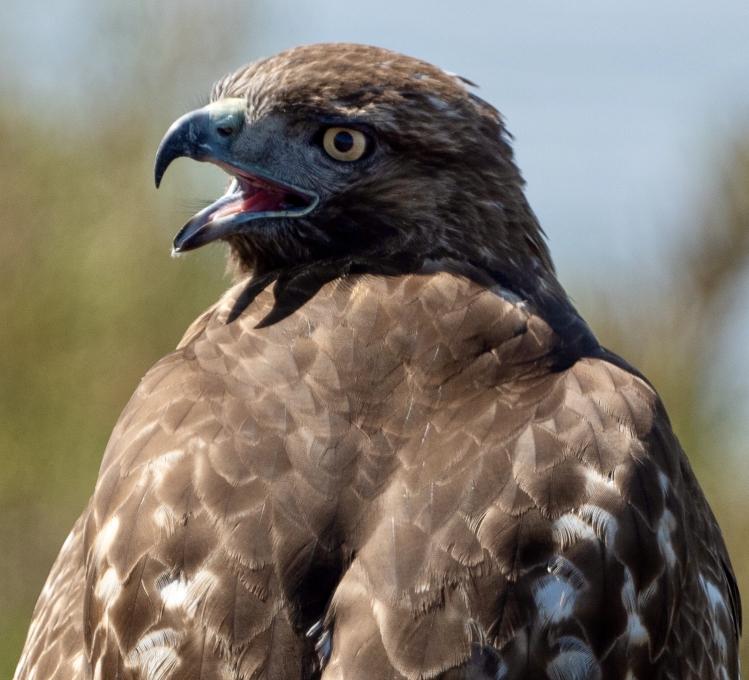

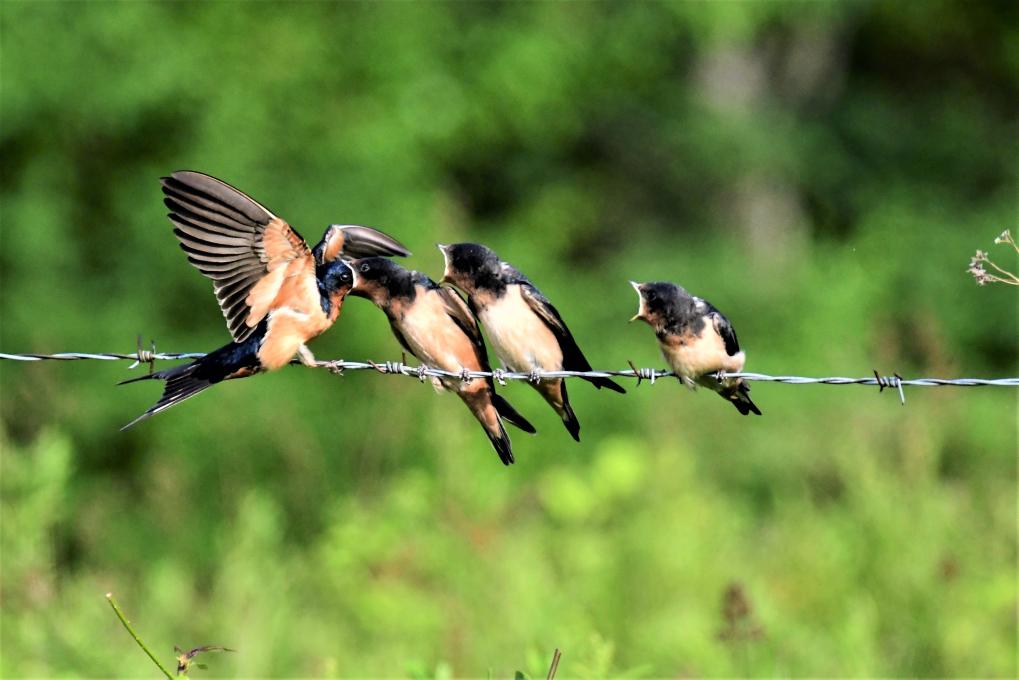
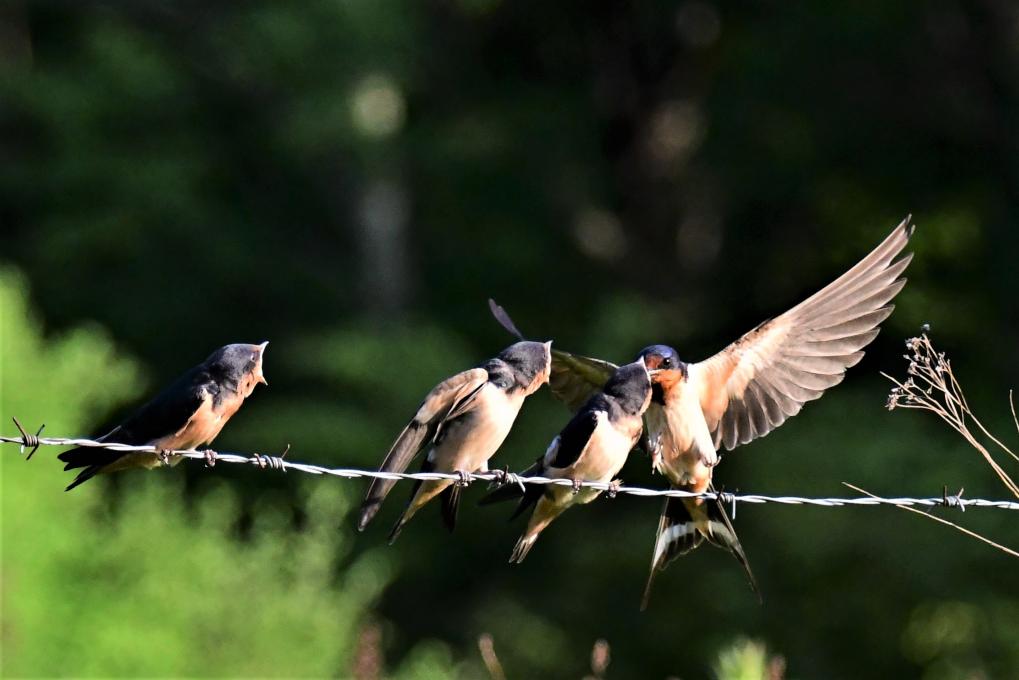
 .
.


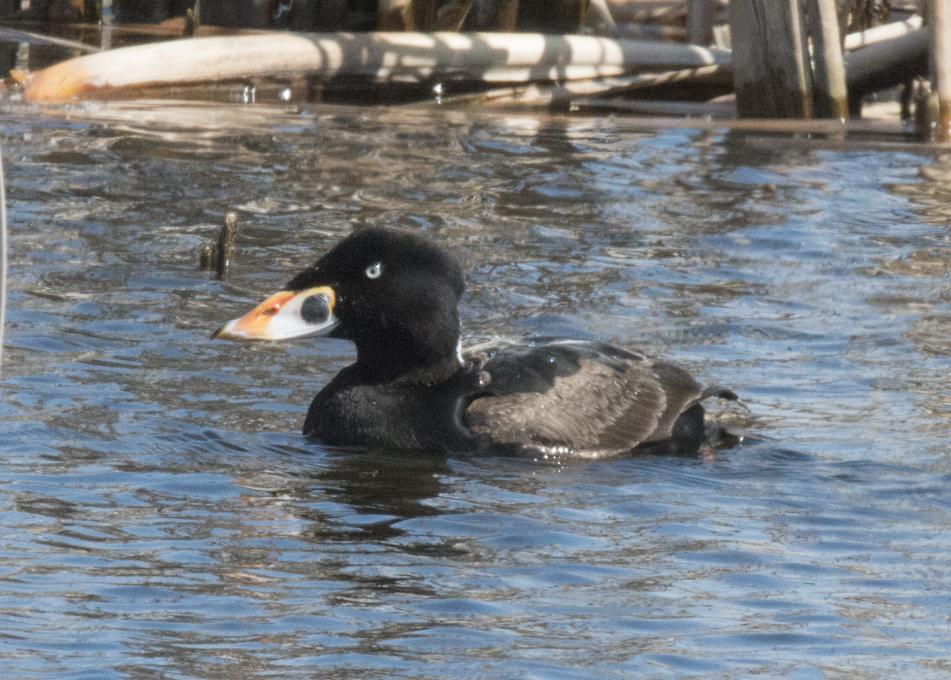 I spotted this Surf Scoter in the marsh at Horicon National Wildlife Refuge. This is a rare find for inland Wisconsin and he was working his way along the edge of the cattails on the opposite edge of an opening that flowed along the road. Using my car as a blind, I parked and waited for him to come to me rather than attempting to move closer. The bird remained in view rather than retreating to cover and passed within thirty feet of me apparently unaware of my presence.
I used the same approach waiting in a hidden position while this Black-Crowned Night Heron continued feeding along the shore at the Barkhausen Waterfowl Preserve and finally maneuvered into the proper light for this photo.
I spotted this Surf Scoter in the marsh at Horicon National Wildlife Refuge. This is a rare find for inland Wisconsin and he was working his way along the edge of the cattails on the opposite edge of an opening that flowed along the road. Using my car as a blind, I parked and waited for him to come to me rather than attempting to move closer. The bird remained in view rather than retreating to cover and passed within thirty feet of me apparently unaware of my presence.
I used the same approach waiting in a hidden position while this Black-Crowned Night Heron continued feeding along the shore at the Barkhausen Waterfowl Preserve and finally maneuvered into the proper light for this photo.
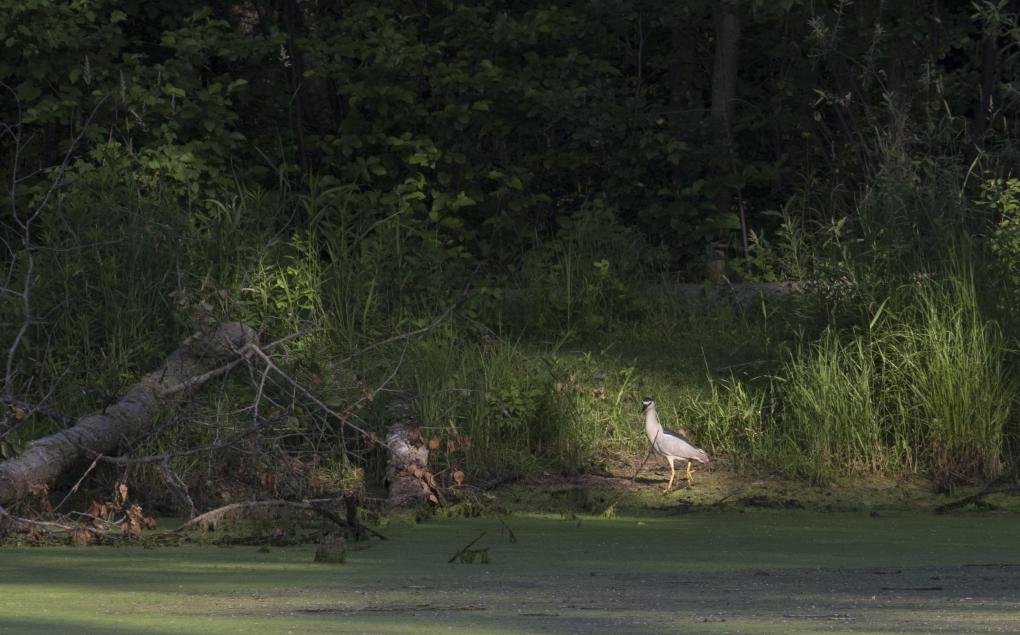

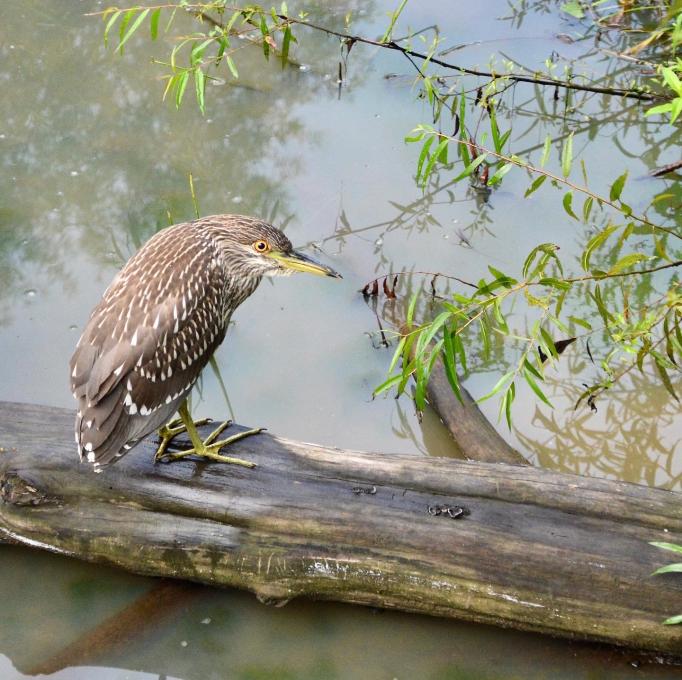

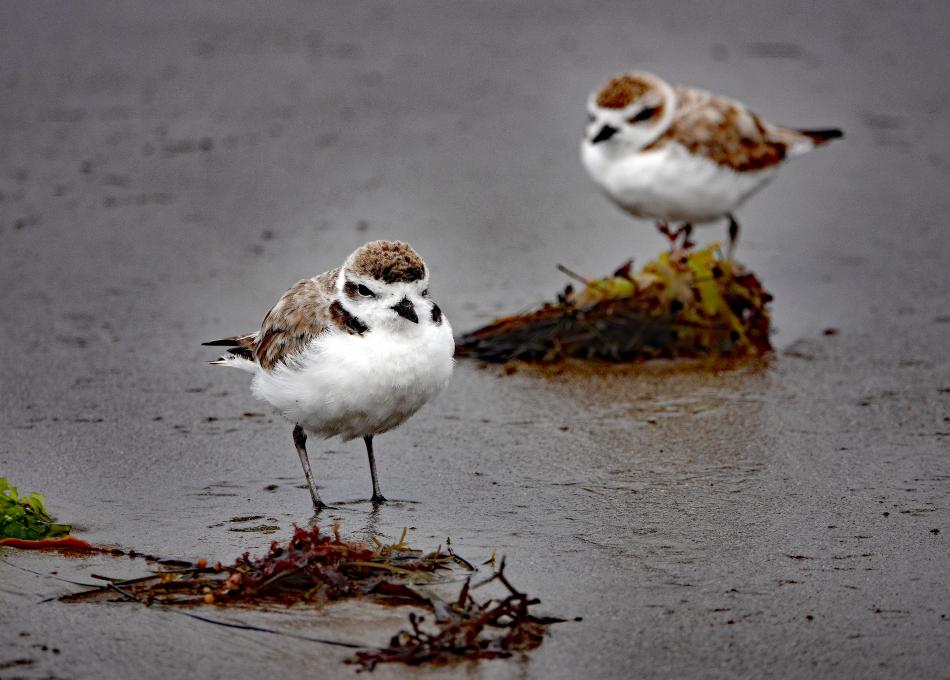 The rear bird is slightly out of focus due to narrow range of focus (F4).
The rear bird is slightly out of focus due to narrow range of focus (F4).


